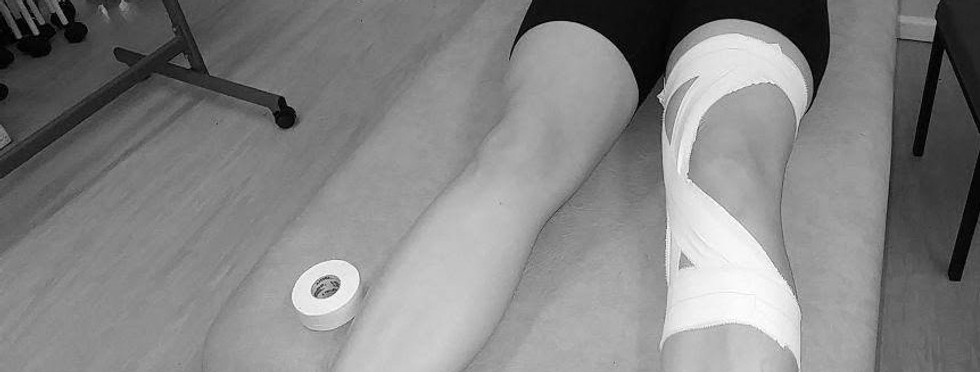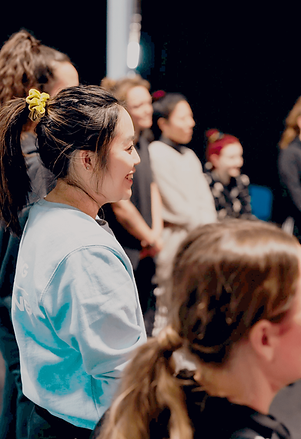
Low Back Pain
What Is Low Back Pain?
Low Back Pain and how to fix it.
Low back pain is one of the most common reasons people seek physiotherapy. 1 in 4 people suffer with pain pain at some point in their life. If you are an active person, such as dancers, performers, athletes, etc, it can have a significant impact on your quality of life.
There are many reasons why pain happens; it may arise from joints, discs, nerves, or muscular imbalances, especially around the Pelvis and Core. Repetitive overuse, change in activity level, our stress level, poor sleep, and being Hypermobile can influence our pain experience as well.
The Structure of the Lower Back?
Low back pain typically affects the lumbar spine, the lower part of your back just above the pelvis. This area supports much of your body weight and absorbs force with every step, jump, or movement. Key surrounding structures includes, lumbar vertebrae and discs, the facet, core muscles. pelvic floor and gluteal muscles.
Low back pain is one of the most common reasons people seek physiotherapy. 1 in 4 people suffer with pain pain at some point in their life. If you are an active person, such as dancers, performers, athletes, etc, it can have a significant impact on your quality of life.
There are many reasons why pain happens; it may arise from joints, discs, nerves, or muscular imbalances, especially around the pelvis and core

Common Causes of Back Pain
-
Lumbar Facet Joint Strain: From repetitive arching or back bending
Disc Irritation or Herniation: Often worsened by spinal flexion (bending forward), twisting, coughing and sneezing. -
Disc Irritation or Herniation: often worsened by spinal flexion (bending forward), twisting, coughing and sneezing.
-
Muscle Imbalances, such as tight hip flexors with weak glutes or core
-
Pelvic Instability – especially common post-injury, postpartum, or during adolescent growth.
-
Sacroiliac Joint (SIJ) Dysfunction – most commonly felt in the lower back and buttocks, but can also radiate to the hip, groin, and even the legs or feet.
-
Overuse or Load Mismanagement from too much, too soon, without recovery
-
Stress-Related Tension – where pain is linked to emotional load, trauma or anxiety.

Holistic and Biopsychosocial Treatment for Low Back Pain
Low back pain isn’t just physical treatment; it also involves your nervous system, stress levels, beliefs, and environment. The NICE Guidelines for managing chronic pain in the UK recommend a multidisciplinary, biopsychosocial approach, which includes:
-
Active exercise-based therapies
-
Cognitive Behavioural therapy (CBT)
-
Acupunture
-
Education and Goal Setting
-
Avoiding over-medicalisation and opioid
Alongside physiotherapy, there are other holistic treatment options that some might find helpful. Breathwork and mindfulness are powerful tools for calming the nervous system and reducing pain sensitivity, especially in those who are dealing with high stress or persistent discomfort.
Massage and Soft Tissue Therapy can help release tight muscles, though it's most effective when combined with active rehabilitation and exercise therapy. For targeted muscular relief, dry needling or acupuncture may be used short-term to address trigger points. These strategies can be integrated with a rehabilitation plan, not used in isolation, to improve function and quality of life over temporary symptom relief with pain medication.
Physiotherapy Treatment Goals
Physiotherapy Rehabilitation for back strength and mobility typically follows a staged approach. In the acute phase (weeks 0–2).
Low back pain is one of the most common reasons people seek physiotherapy. 1 in 4 people suffer with pain pain at some point in their life. If you are an active person, such as dancers, performers, athletes, etc, it can have a significant impact on your quality of life.
There are many reasons why pain happens; it may arise from joints, discs, nerves, or muscular imbalances, especially around the pelvis and core the focus is on reducing pain, restoring gentle movement, and activating deep core muscles. The sub-acute or mid-stage (weeks 3–6) shifts toward building endurance in the core, glutes, and pelvic stabilisers, and correcting postural habits. In the late stage (6–12 weeks and beyond), progress to dynamic control exercises, such as single-leg loading, back extension strength, and movement-specific drills that reflect the demands the daily life.
.png)
